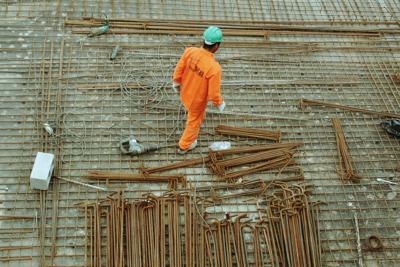
The construction segment has witnessed impressive growth in the US in recent years. Despite the pandemic slowdown, the industry has been swift to recover and get back on track. The growing demand for housing and commercial buildings is probably the reason for its growth. The market size touched a massive $1.8 trillion in 2022, accounting for 4% of the national GDP.
While the growth statistics make the industry an attractive proposition for business owners, rising costs are a big concern. According to historical data, the production price index (PPI) for building materials has increased steadily from 1982 to 2022. The number is up over 340 in 2022, more than triple the baseline of 100 in 1982.
Delays and inefficiencies contribute to high operational costs further, cutting down profits in the long run. As a builder, you must implement measures to optimize costs and maximize your gains without compromising project quality.
In this article, we will highlight a few cost-cutting strategies construction entrepreneurs can rely on in 2024.
Look for Trouble Spots
The first step is to assess your project and find the problem areas that may be contributing to operational costs or reducing efficiencies. The costs witnessed a 14.1% year-over-year increase by year-end 2022 due to rising labor and material prices. Supply chain disruptions, inflation, and the war in Ukraine are the key challenges faced by the industry.
While some factors are uncontrollable, you can address others with proactive measures. For example, an in-depth analysis of labor costs enables you to pick opportunities to optimize workforce scheduling, reduce overtime expenses, and improve technician utilization. You can train and upskill workers, provide better machines, and streamline processes for cost-cutting.
Leverage Technology
Construction is a traditional domain, but innovation is a norm in the sector after the pandemic. The global construction technology market was worth $5,058.8 million in 2023 and is projected to reach $24,178.4 million by 2033. Despite the mindset barrier, more companies are willing to adopt these solutions as they can help increase efficiency and lower costs.
For example, project management software can revolutionize how you manage projects. These solutions offer features such as job scheduling, inventory management, real-time tracking, and reporting. They help automate manual tasks, reducing the risk of errors that elevate costs. Building Information Management (BIM) technology can facilitate better designs at lower costs.
Optimize Equipment Costs
Deloitte notes that the costs of construction machinery and equipment surged by 6% year-over-years in 2023 and by more than 26% since the beginning of 2020. Handling this increase is tricky for builders because outdated equipment can hamper the speed and quality of projects. Conversely, new investments often entail hefty costs.
According to SitePro Rentals, renting equipment can give your business the best of both worlds. Consider renting heavy machinery like forklifts, generators, vehicles, air tools, and aerial work platforms to limit your investment. You can also look for high-quality used machines and tools to buy them without burning your budget.
Prioritize Proactive Maintenance
Whether you buy or rent equipment, it should be in top shape to deliver high performance. Keeping breakdowns at bay is also essential from a budget perspective. The last thing you want to deal with is high repair costs and delays due to unexpected disruptions. Proactive maintenance can save your business from these painful challenges.
Research suggests that preventive maintenance can extend the operational life of machinery by 20-40%. A longer lifespan translates into a delay in replacement costs. It also minimizes repair expenses and ensures that equipment runs at peak efficiency, lowering overall operational costs for construction companies.
Schedule timely repairs, encourage workers to report issues, and invest in real-time monitoring capabilities to stay ahead of costly breakdowns and emergency repairs.
Invest in Strong Supplier Relationships
Robust supplier, distributor, and partner relationships can help you reduce material costs and equipment rentals. You can seek discounts by ordering bulk materials or renting machinery for the long haul. Besides cost savings, strong relationships also prevent delays and supply chain disruptions if things get out of hand.
At the same time, foster connections with the best partners in the industry to ensure the quality of materials and equipment sourced for your business. Building loyalty and trust takes time, so be ready to stick with reliable providers to strengthen these bonds.
In conclusion, optimizing construction costs is essential because they can kill your profit margins if not controlled. Fortunately, reducing them takes a little creativity and good business acumen. You can follow these simple and actionable tips to reduce project costs without sacrificing project quality and client satisfaction.





(0) comments
We welcome your comments
Log In
Post a comment as Guest
Keep it Clean. Please avoid obscene, vulgar, lewd, racist or sexually-oriented language.
PLEASE TURN OFF YOUR CAPS LOCK.
Don't Threaten. Threats of harming another person will not be tolerated.
Be Truthful. Don't knowingly lie about anyone or anything.
Be Nice. No racism, sexism or any sort of -ism that is degrading to another person.
Be Proactive. Use the 'Report' link on each comment to let us know of abusive posts.
Share with Us. We'd love to hear eyewitness accounts, the history behind an article.